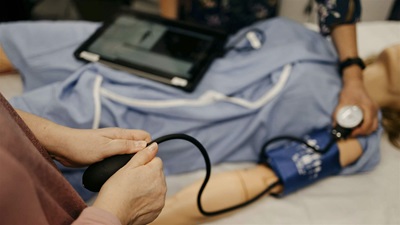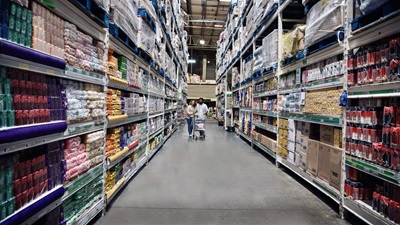Data Underpins So Much of Public Health
Seattle and King County epidemiologist shares collaborative efforts to turn data into action
As the data modernization director for the public health department in Seattle and King County, Washington, epidemiologist Alastair Matheson, Ph.D., MPH, leads efforts to improve the collection and collaborative use of data to help people live longer, healthier lives.
This interview has been edited for clarity and length.
What drew you to the field of public health, and to epidemiology in particular?
I have a familial connection to health care—my mom’s a nurse and my sister’s a doctor—so health has always been on my radar. When I was in school, I became particularly interested in systems change as a way to have a broad impact, and that’s what public health is all about.
After college, I worked in a number of different public health areas and then started to get into informatics and the data side of things, which led me to epidemiology. Data is key to epidemiology, and epidemiology underpins much of public health.
What exactly is a “data modernization director” for public health?
Public health is really great at collecting and generating data, but sometimes that data gets sucked into something of a black hole, never to be seen or used again. As data modernization director, I’m focused on how we can use data more effectively and efficiently to drive public health actions that will help people.
What does that entail day to day?
It can be a lot of different things. Sometimes people within the public health department will come to me, looking for help improving their systems and processes and finding ways to make better use of the data they have. Sometimes I’m going out to teams—within Seattle and King County and externally—sharing promising practices, or proposing ways we might be able to partner and produce data that’s more useful to the people we serve.
What are you trying to accomplish?
It’s my job to convince people that data modernization, in its many forms, is time and energy well spent. I want to clearly show them that even—and probably especially—in a resource-limited environment, the improved use and sharing of data is essential to being as efficient as possible and to improving the public’s health most effectively.
How are Seattle and King County (and the entire state of Washington) using health care data—from various sources, such as Medicaid and state public health departments—to try to improve the health of residents?
Public health departments—even small ones—generate their own data, whether it’s from clinics, community health events, or other kinds of efforts. That’s important to mention first because there is a lot that public health departments can do to better use their own data before even getting to collaborative opportunities with organizations like state Medicaid agencies.
At the Seattle and King County’s department of health, we’ve been working with Medicaid for more than eight years now in a few different ways: establishing systems to link data, collaborative efforts to measure the effects of Medicaid expansion on health outcomes, and a formal partnership with the Washington state health care authority, which administers both Medicaid and Medicare.
Medicaid is a core data source for us and fundamental to a lot of our public health surveillance work. There’s really a lot of opportunity and value in linking our data with Medicaid data to better identify what’s going on in the community health-wise, and the impact of public health efforts as well.
What do you see as the advantages and challenges of getting different government agencies—and Medicaid and the public health department specifically—to share data and collaborate in efforts to improve population health?
Eight years on, it can be easy to rattle off examples of successes and benefits, but all of those were possible because of a significant amount of time spent on relationship-building. When we at the public health department first went to the state health care authority to get data, there were understandably a lot of questions for us, so we had to do a lot of education—even at the fundamental level of just explaining why we even wanted to share data.
So, in terms of challenges, it takes time and resources to build relationships and build the trust that’s foundational to a data partnership. As for advantages, by sharing data and collaborating, you can get a clearer, more comprehensive understanding of the health and well-being of Medicaid participants, and how to most effectively target efforts to protect people’s health within that community.
What do you think are the biggest misconceptions about using data to improve population health?
People overestimate how well data sources talk to each other and the level to which data is already integrated. It doesn’t just happen, even with today’s technology; it takes a lot of work. In Seattle and King County, the efforts I’ve been talking about here have been huge, multiyear undertakings, requiring major investments of not just dollars but also human capital. And unfortunately, I think that misperception of how easy it is to get data sources talking to each other sometimes results in unrealistic or overinflated expectations for our work.
I think there’s also a misunderstanding of even just what public health is. Public health isn’t just in the business of fighting disease—although, of course, that’s part of it. It’s a holistic, encompassing approach to protecting and improving people’s health. Even health experts sometimes will know their area of public health, but don’t necessarily see it within the broader context or connected to other public health efforts. That breadth of public health is important when we’re talking about data partnerships and what data would be helpful.
What more could states and localities be doing to leverage the health care data they have?
First, I’d say they need to understand what they have in terms of data. And second, they need to prioritize. What are the high-value uses of this data? What will benefit our state, county, or locality most? And then how does that inform what connections or data partnerships you want to forge?
I would also suggest thinking broadly, beyond just a “traditional” or “obvious suspect” health data source. In Seattle and King County, we have an integrated data hub that pulls in data from 12 sources spanning not only Medicaid, public health, and behavioral health services, but also data from housing, the judicial system medical examiner’s office, and more. It’s all linked at the county level and allows for cross-sector analyses and insights that we wouldn’t otherwise have.
Of course, putting together a resource like this takes time and intentionality. We started with just three data sources and have gradually built out the integrated data hub over the years. Compliance and privacy experts were heavily involved, and we strove to be very transparent and explicit about the ways data would be shared and used. But at the end of the day, my main takeaways for other states and localities would be: Think big. It’s possible.









